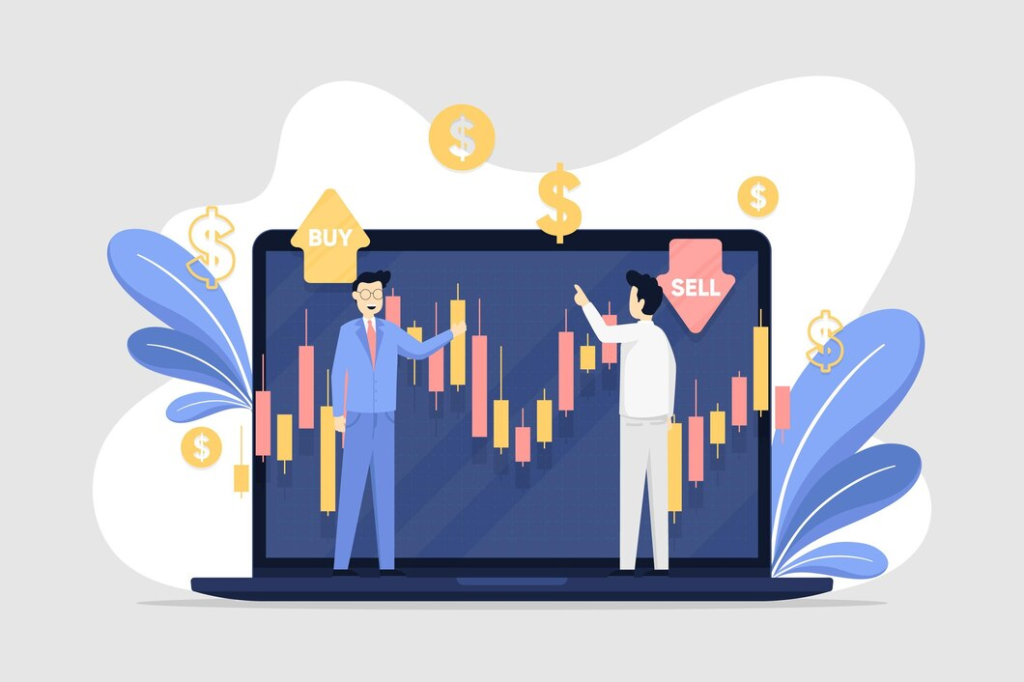With so many variables that drive the stock market, knowing what those factors are proves to be crucial for trading successfully. Examples include the ISM Manufacturing Index, or PMI for short: a leading economic indicator in analyzing the health of the U.S. manufacturing sector. But exactly how does PMI affect the stock market, and can we devise a strategy that maximizes return on this knowledge?
In this article we are going to backtest the relationship between ISM Manufacturing PMI readings and the performance of the S&P 500 index. Using clear rules on PMI data, we will see how the market reacts when it finds expansionary (above 50) and contractionary (below 50) conditions in manufacturing. We will check if, within this backtest, there is a profitable strategy for trading based on PMI data and how it compares with broader markets.
At the end of this article, you will get a better understanding as to how the readings of PMI correspond to the performances of the stock market and how to structure your trading strategy with clear entry and exit points. Next, find out how to put PMI data to your trading advantage when making the right decisions.

What is ISM Manufacturing Index (PMI)?
The Purchasing Managers’ Index is also known by the term ISM Manufacturing Index – a measure of the healthiness of America’s manufacturing sector. Of course, it was already stated that an index represents a monthly survey of companies operating in the 18 manufacturing industries. The most significant, or important, data coming out of such surveys include production levels, new orders, supplier deliveries, and employment conditions.
The PMI is a diffusion index between 0-100 :
Any reading of more than 50 indicates the manufacturing sector is growing
Any reading less than 50 implies that the manufacturing sector is contracting
Any reading of precisely 50 reflects no change compared to the previous month.
The PMI can serve as a leading indicator that would give the trader an idea of the general economic conditions and what he will probably expect concerning stock market movements. A good reading above 50 may suggest economic growth and usually is accompanied by rising stock prices. A bad reading may be used as a signal of an impending slowdown and, possibly, stock price declines.
Backtesting the PMI Trading Strategy
Now, let’s do a backtest of a simple strategy which depends on readings of ISM manufacturing PMI. We take two cases: the first when the PMI is above 50 and is indicative of expansion, and when it is less than 50 and is a contraction. The strategy would then be: to buy the S&P 500 index when PMI is above 50, and then just hold for some number of time units. We will also compare the returns of this strategy to a simple buy-and-hold approach that we will create using the S&P 500 as our benchmark.
Strategy: Trading When PMI is Above 50
If the PMI is above 50, so expanding, we buy the S&P 500 index on the open of the month then sell on the open of the next month. Our rule here says we’re going to hold the S&P 500 for one month. Okay; let’s have a look at what happens if that’s what we do.
Backtest Results (1-Month Hold)
Investment Time: Strategy is invested 72% of the time: One-month hold periods.
Annual Return: Annual return from this strategy is 7.3%.
Comparison to Buy-and-Hold: For comparison, the buy-and-hold return for the S&P 500 is 8.5% annually.
A PMI-based strategy is very good in return. However, it apparently shows about 0.1% underperformance from the buy-and-hold strategy. That’s one of the benefits of the PMI strategy: the drawdown can be reduced. That means you would feel less risk and volatility at times of contraction.

Extended Holding Period
If we increase the holding period? We explore below the backtest results holding the S&P 500 for different months of time when PMI reading is above 50.
| Hold Period (Months) | Average Gain per Trade | Time Invested (%) |
| 1 Month | 7.3% | 72% |
| 3 months | 9.1% | 78% |
| After 6 months | 11.5% | 82% |
| 12 months | 10.99% | 86% |
For example, **if you buy the S&P 500 for 12 months after an expansionary PMI reading above 50, you get an average gain of 10.99% and are invested 86% of the time. That is a lot better than a *random 12-month period*, whose returns are likely to be lower or more volatile.
How Does the PMI Influence Drawdowns?
Another large advantage of trading the PMI strategy is that it has drawdown. In other words, not only could the strategy theoretically perform better than the market, but even in cases in which it does not, it avoids almost the worst losses, at least at times when the market contracts. If only periods are taken into account during which the PMI is above 50, nearly all market downturns are filtered out by the strategy and a much more stable equity curve is generated in the time line.
For example, in the 2008 financial crisis, the PMI was below 50, which is a contraction reading, meaning investment would have been denied when all momentum was to the downside and yet some of the most significant losses were known. Conversely, in very strong bull markets where PMI readings are far above 50, the strategy captured all gains but only partially in the manner a conventional buy-and-hold strategy would fully be invested in those gains.
Several lessons can be drawn from the backtest result about the use of ISM Manufacturing PMI as a trading signal:
- Good Returns with Minimized Exposure : It generates good returns with substantial lesser exposure to the market. The predictive power of PMI avoids all periods of economic contraction and the associated period drawdowns.
- Better for medium to long-term holds.
The returns in holding the position for a month after an above-50 PMI reading are observed to be modest. However the strategy works much better when you hold positions for some months. Holding positions for 12 months, for instance yields almost 11% average gains as compared to other random periods.
- Better for medium to long-term holds.
- A useful complement to other Indicators
Indeed, though the PMI has lost huge value in terms of singling out strictly expansionary periods, the smart use of it alone or blended in combination with other indicators-technical analysis, sentiment, or other economic data-could form the basis for more sophisticated trading strategies. - All in all, I do believe that this strategy provides a rather good approach in trading the S&P 500 in using the macroeconomic indicators. It offers consistency and stability, which remains at the core of a conservative trader who seeks low volatility while still securing part of market gain during periods of economic growth.

Conclusion: Use of PMI to Improve Your Trades
The ISM Manufacturing PMI is a very strong economic indicator that may lead you to make good trading decisions. Through backtesting how the readings from the PMI affect S&P 500, we were able to construct a strategy that benefits from times of expansionary periods (PMI > 50), generating consistent returns with lower risks.
Key takeaways:
The strategy will do best in times of expansionary market phases and generates stable returns with low drawdowns. With these reasons,
- The more the holding for say 12 months, the larger the returns will be compared to holding periods.
- The PMI strategy would turn out to be really useful in filtering the condition of markets and increasing the continuity of your trades.
This component of ISM Manufacturing PMI, hence, when added in the trading scheme, helps for better entry and exit timings with this added advantage of lesser risk exposure compared with traditional buy-and-hold strategies.